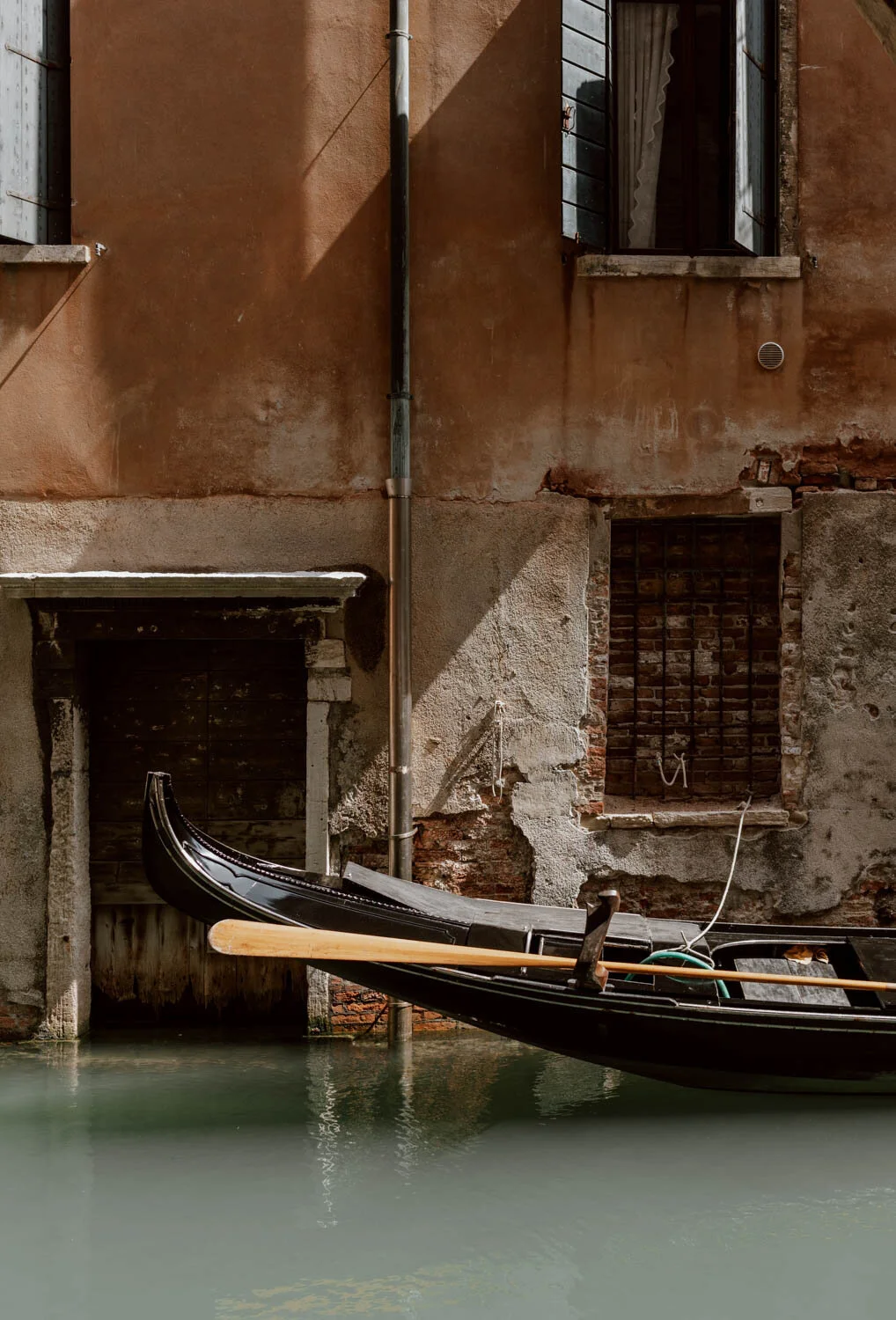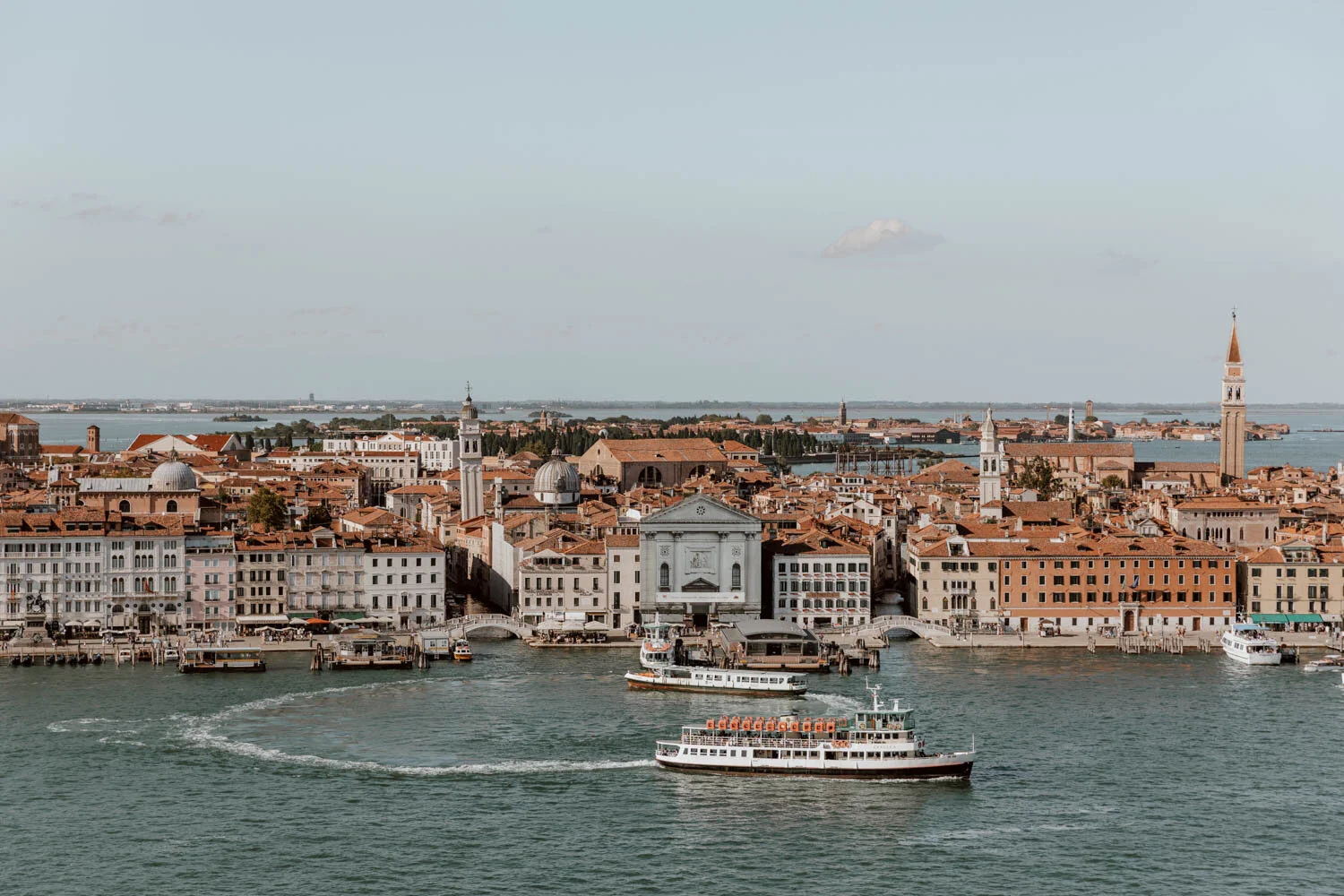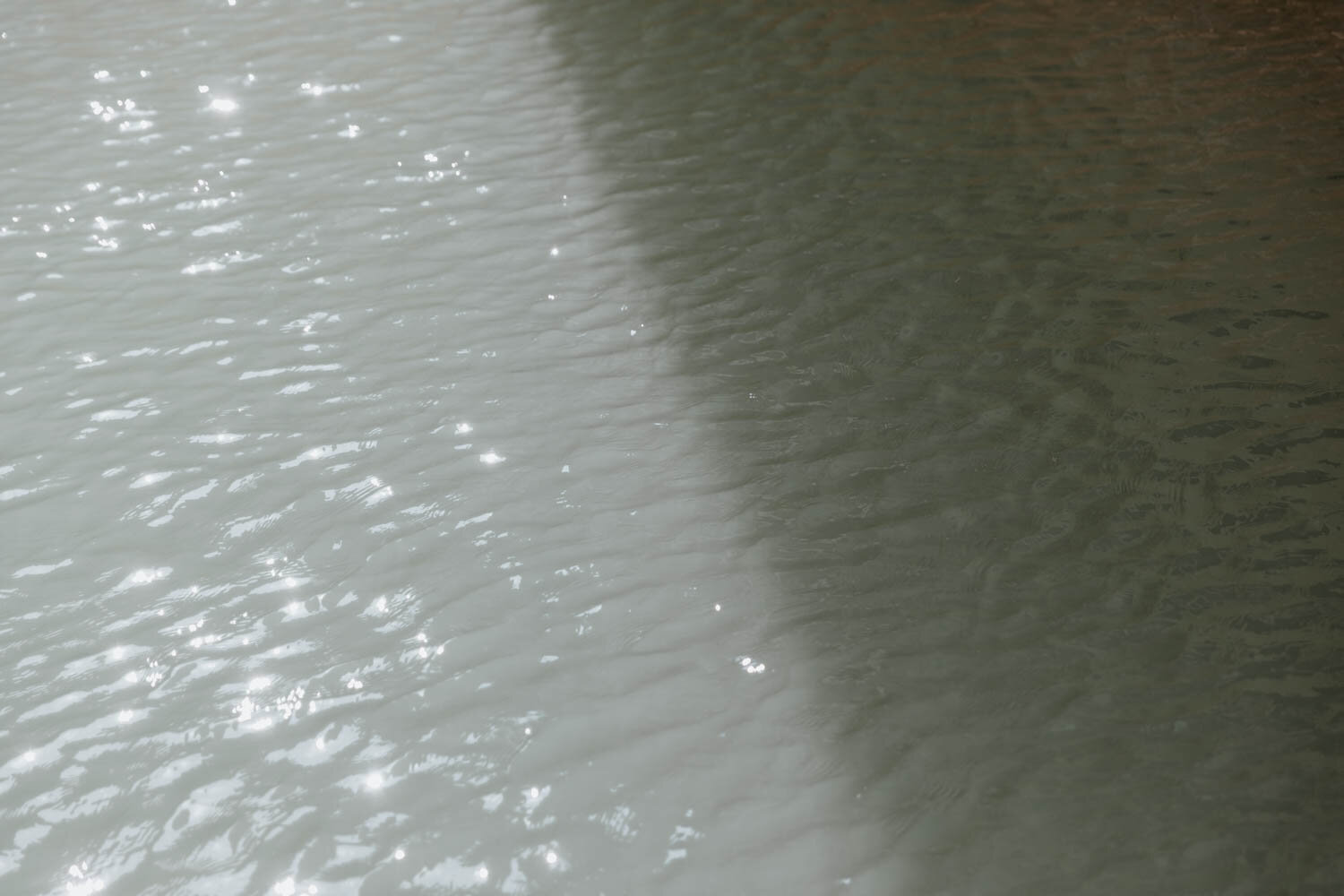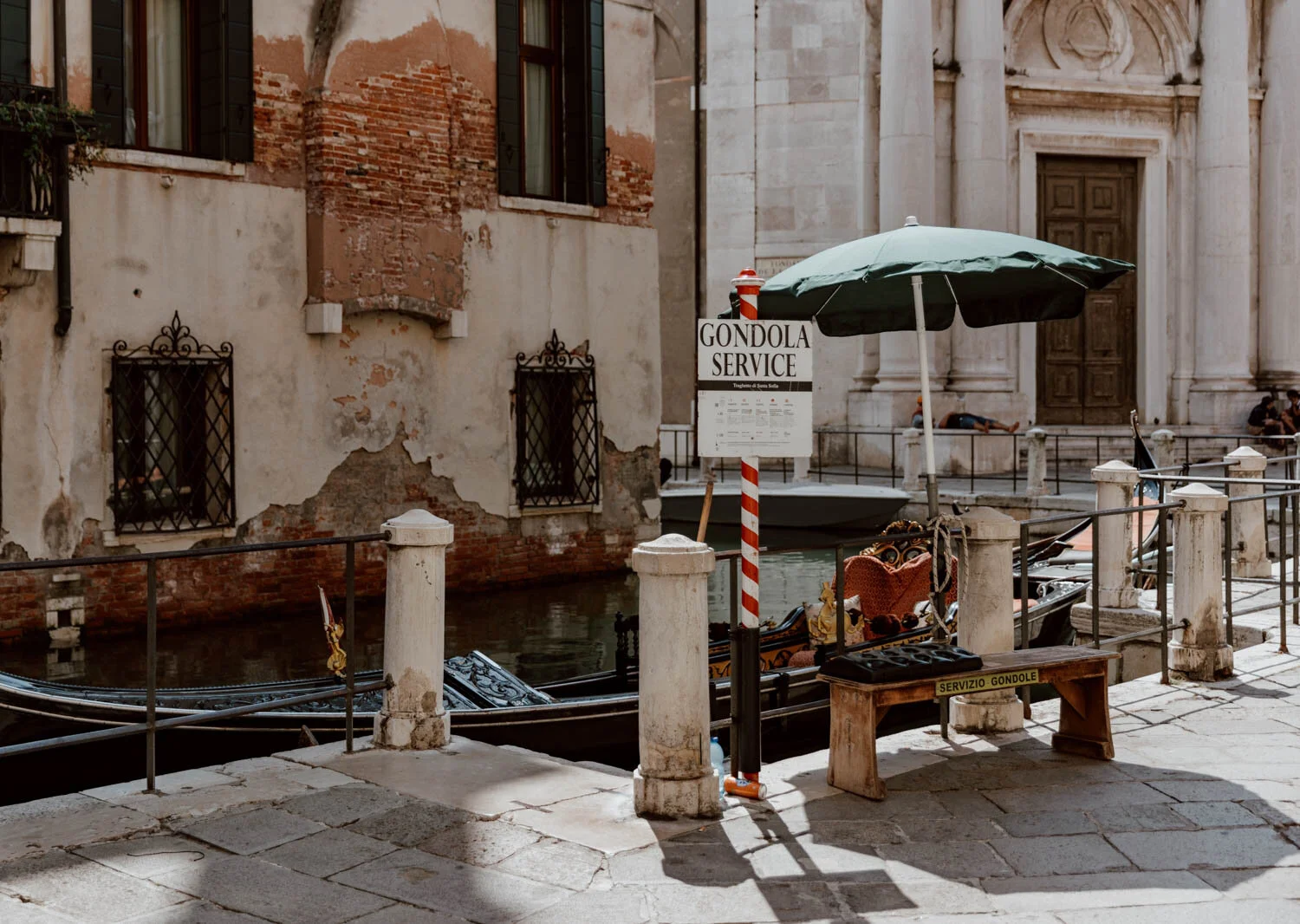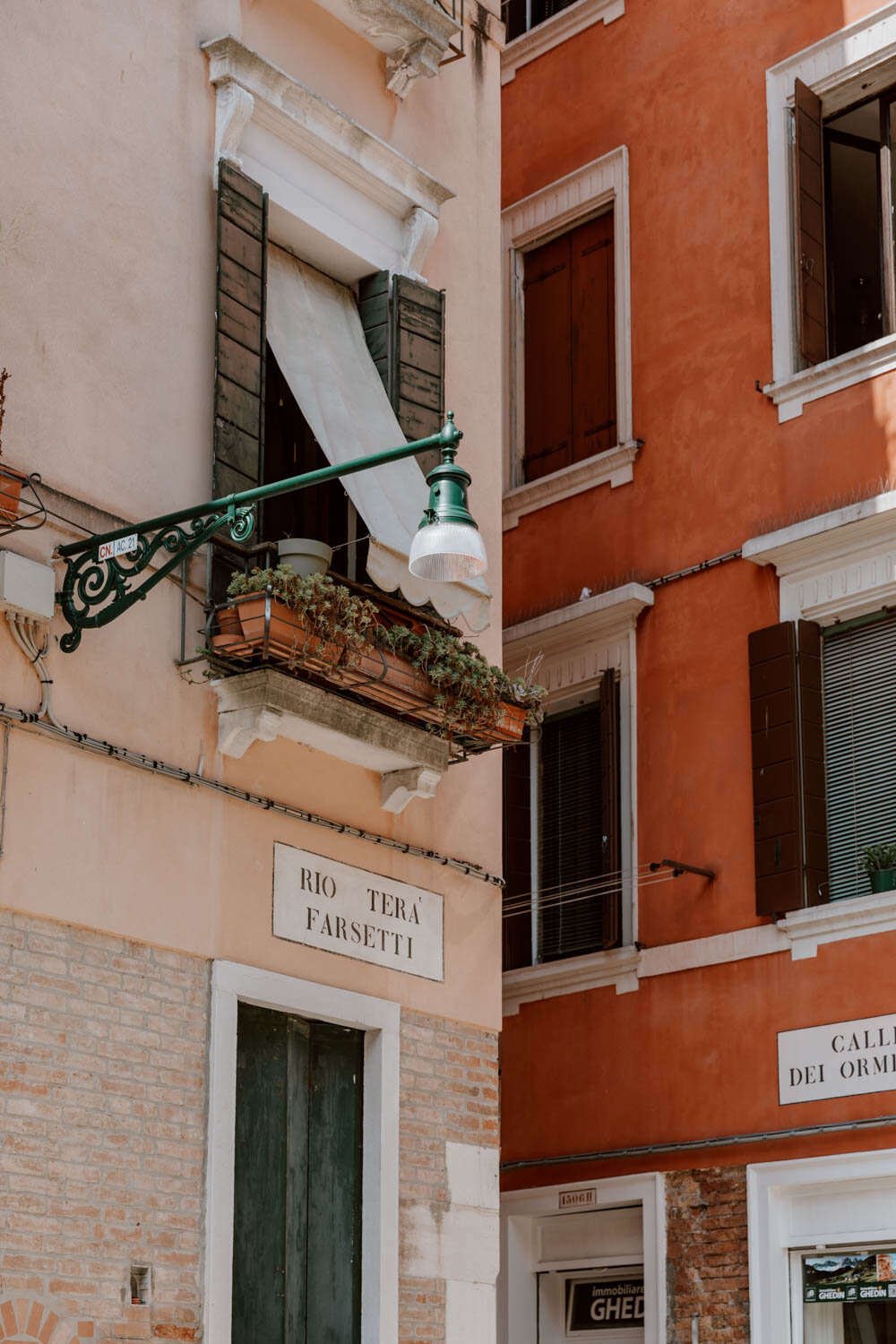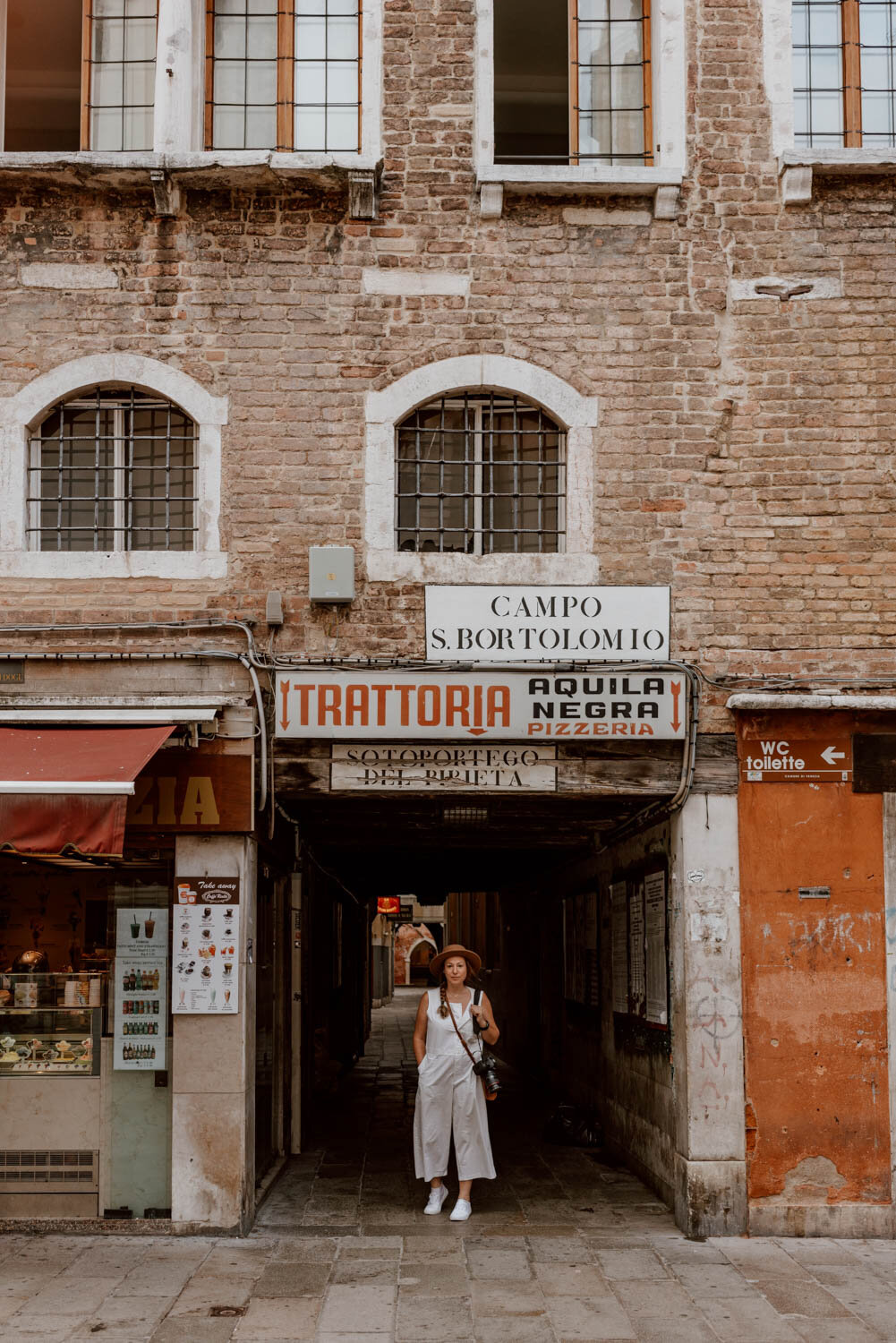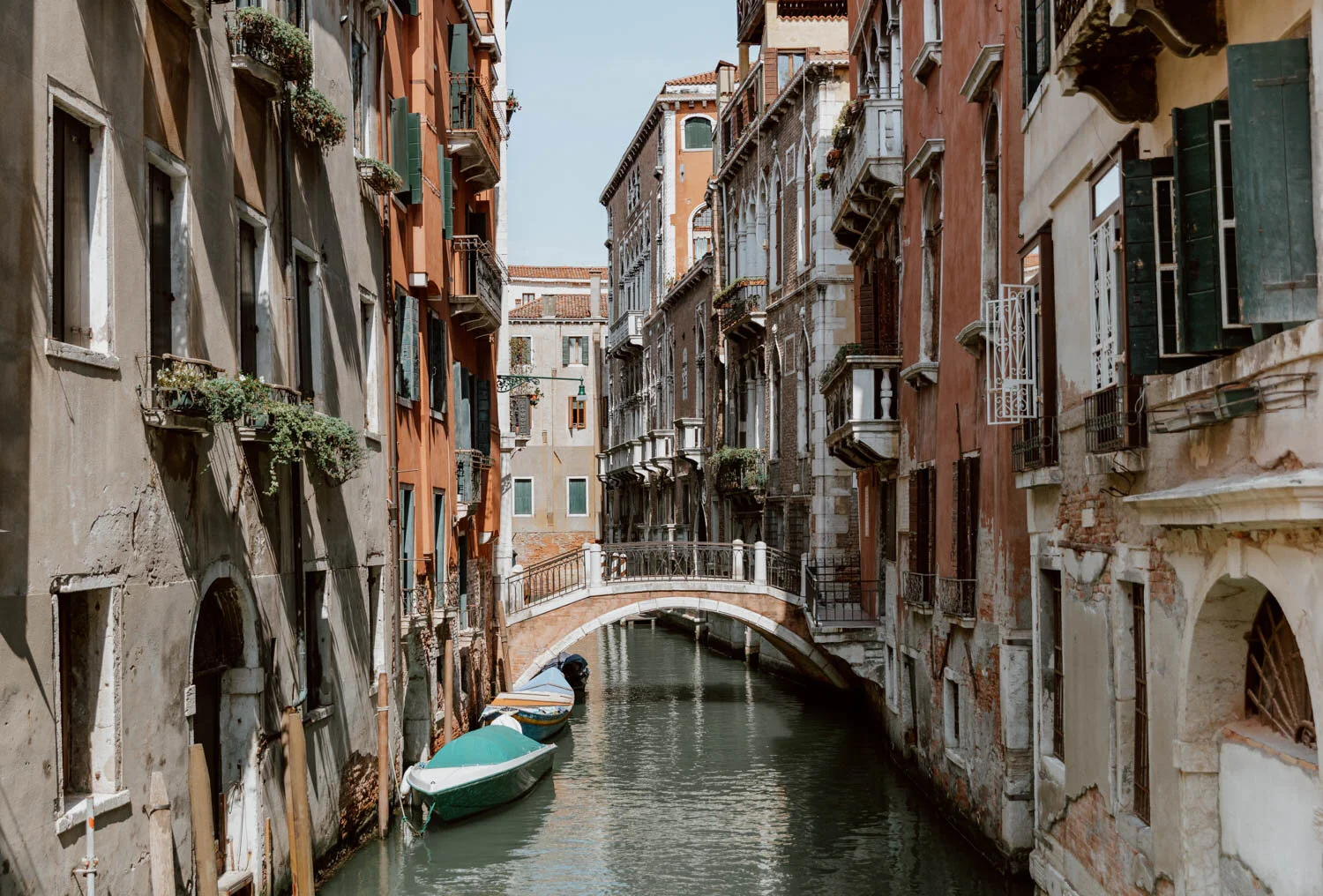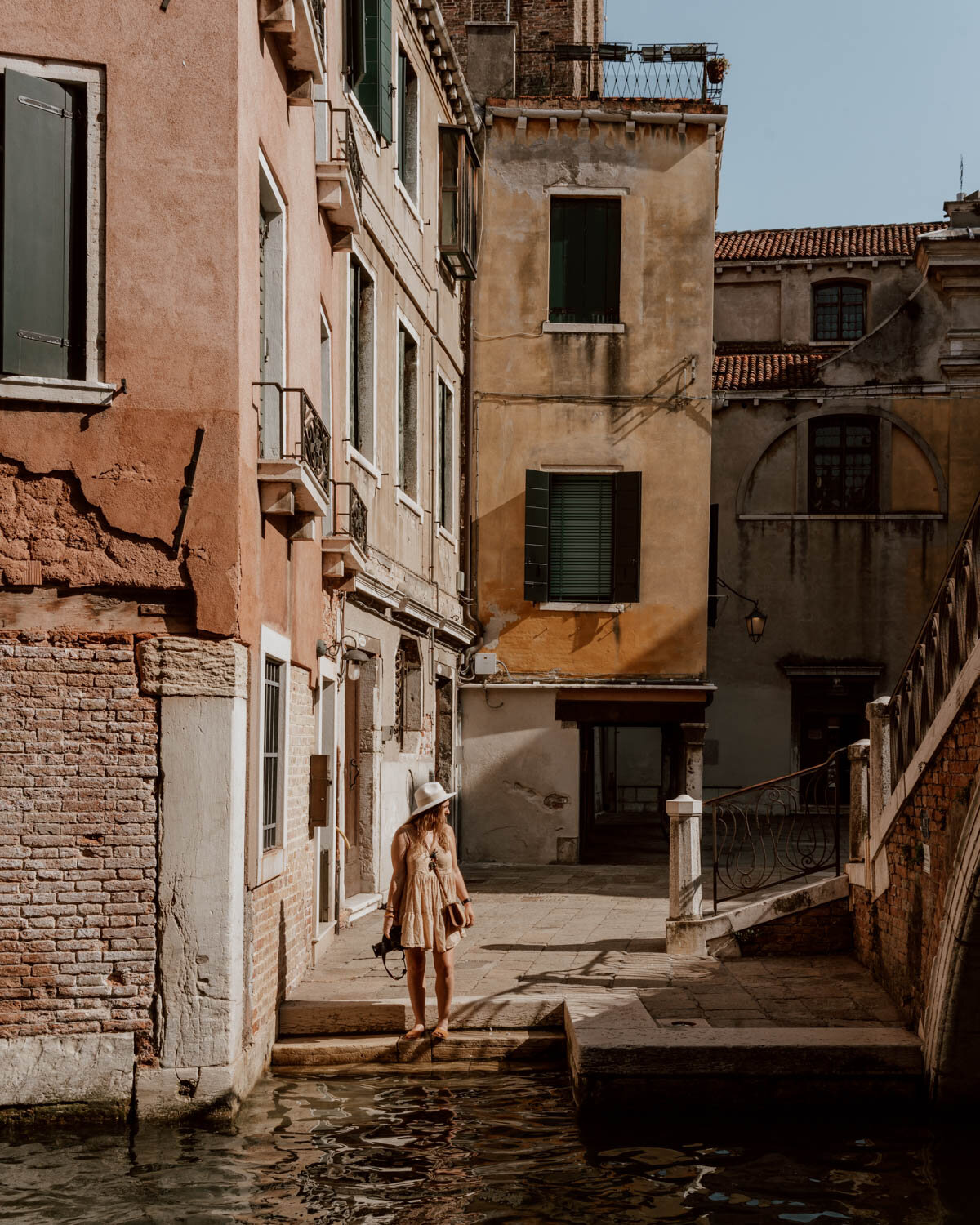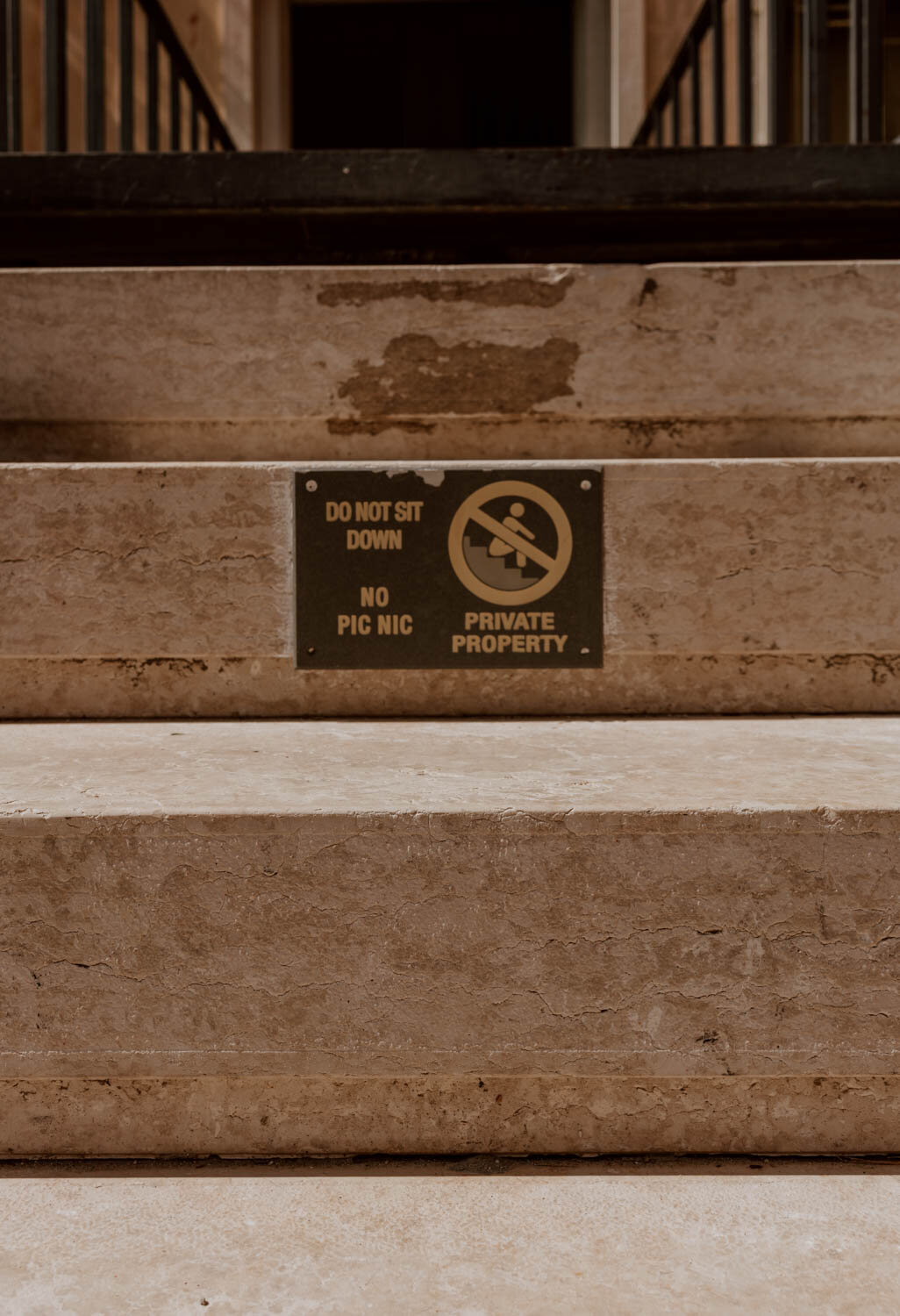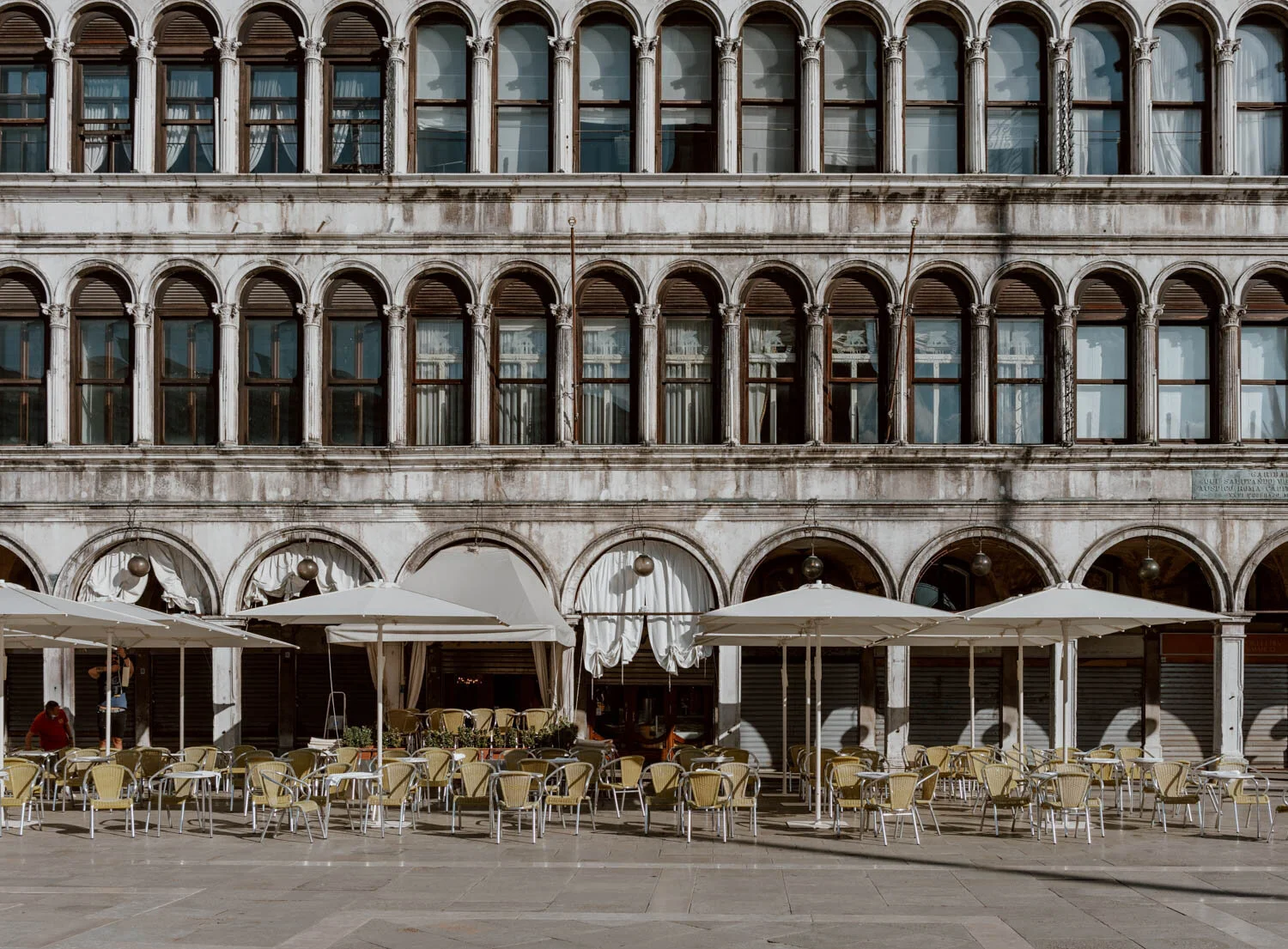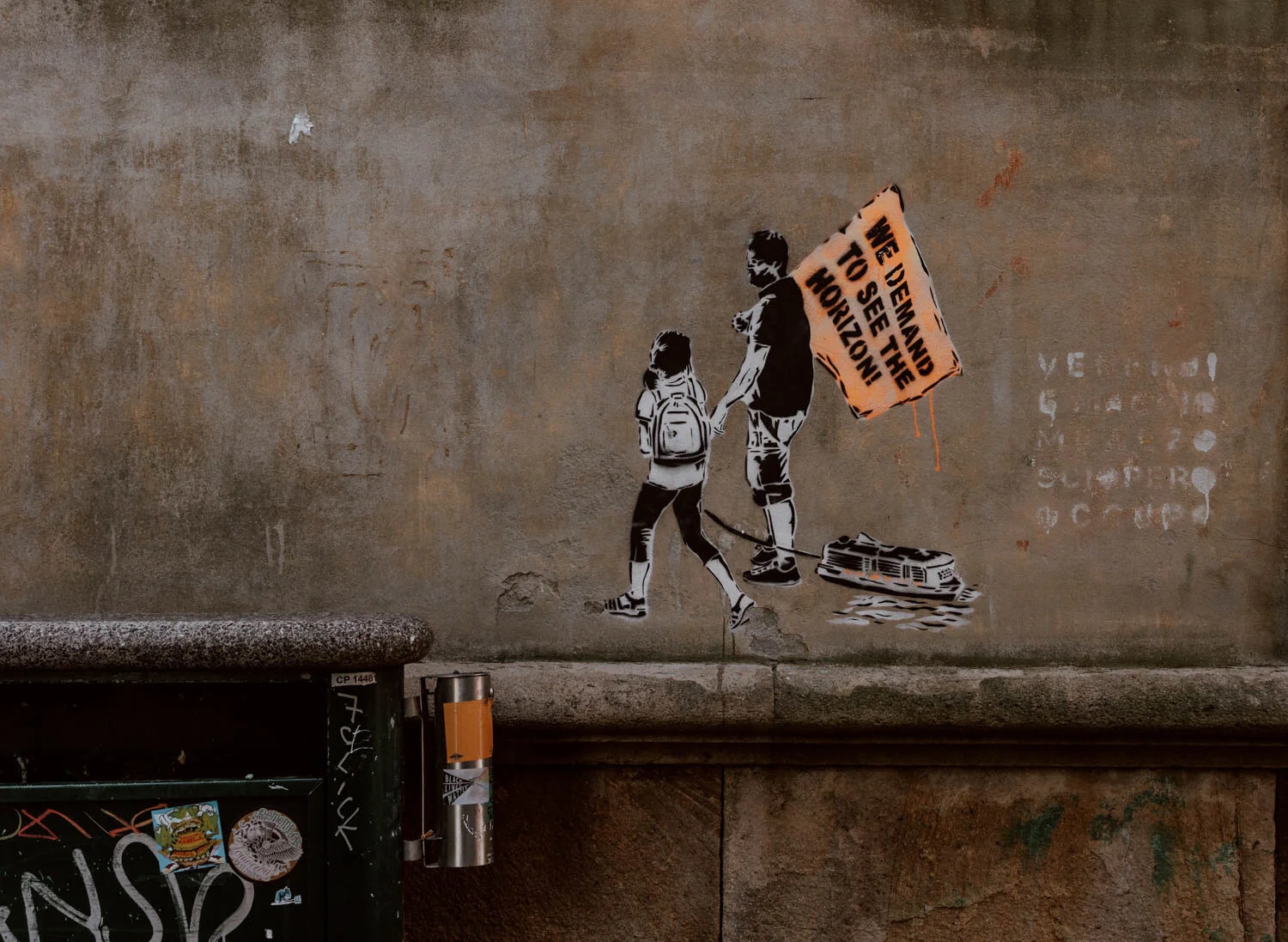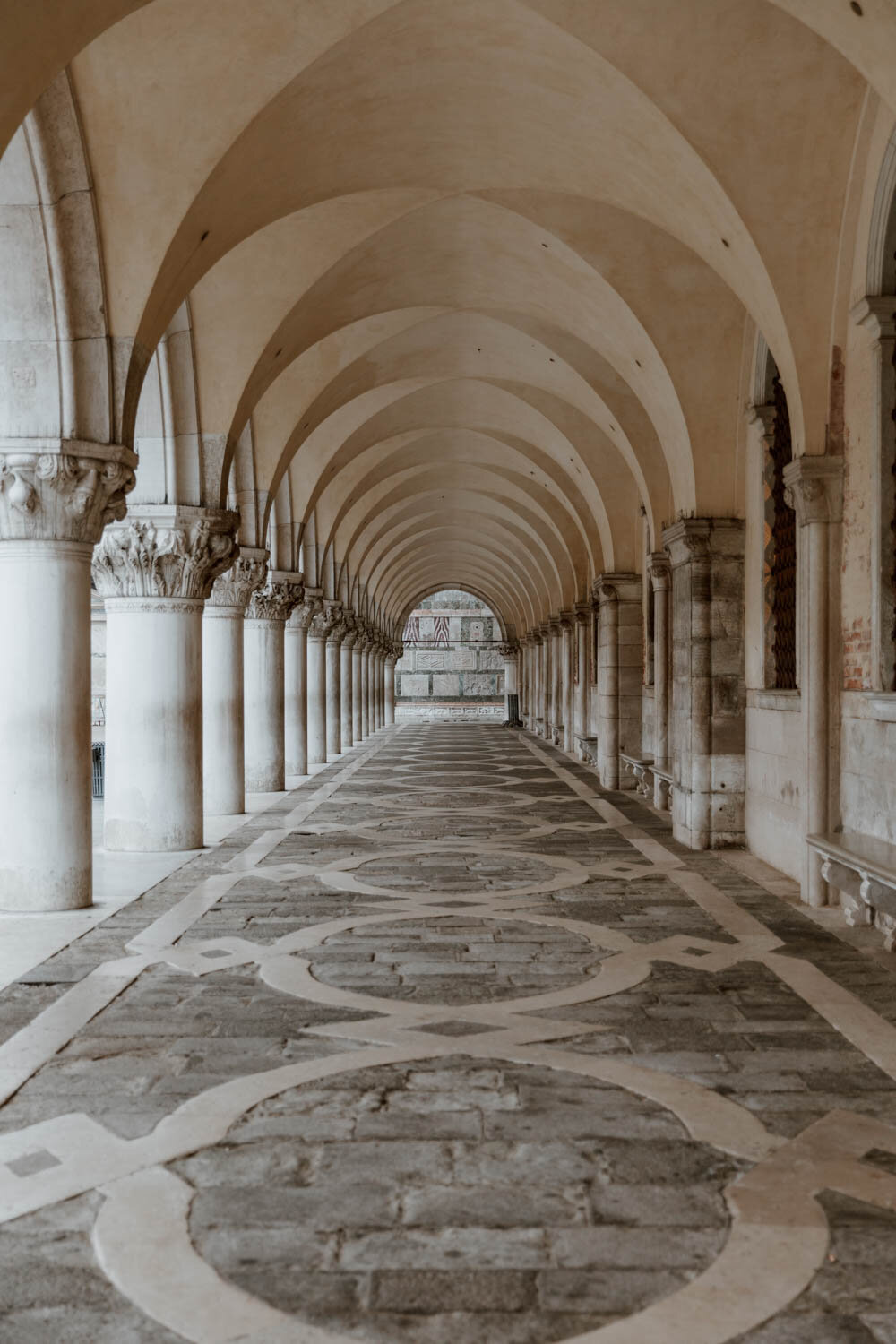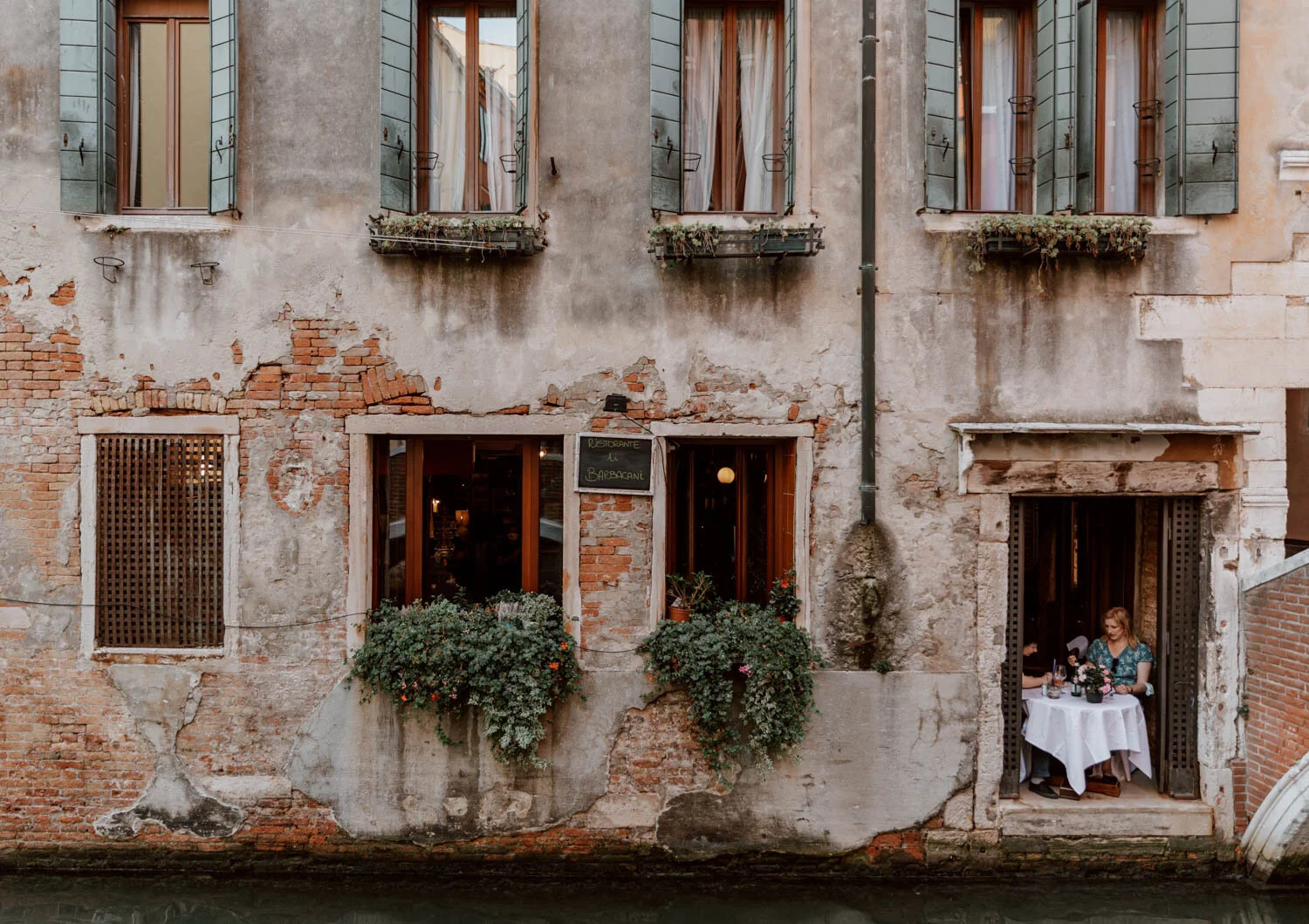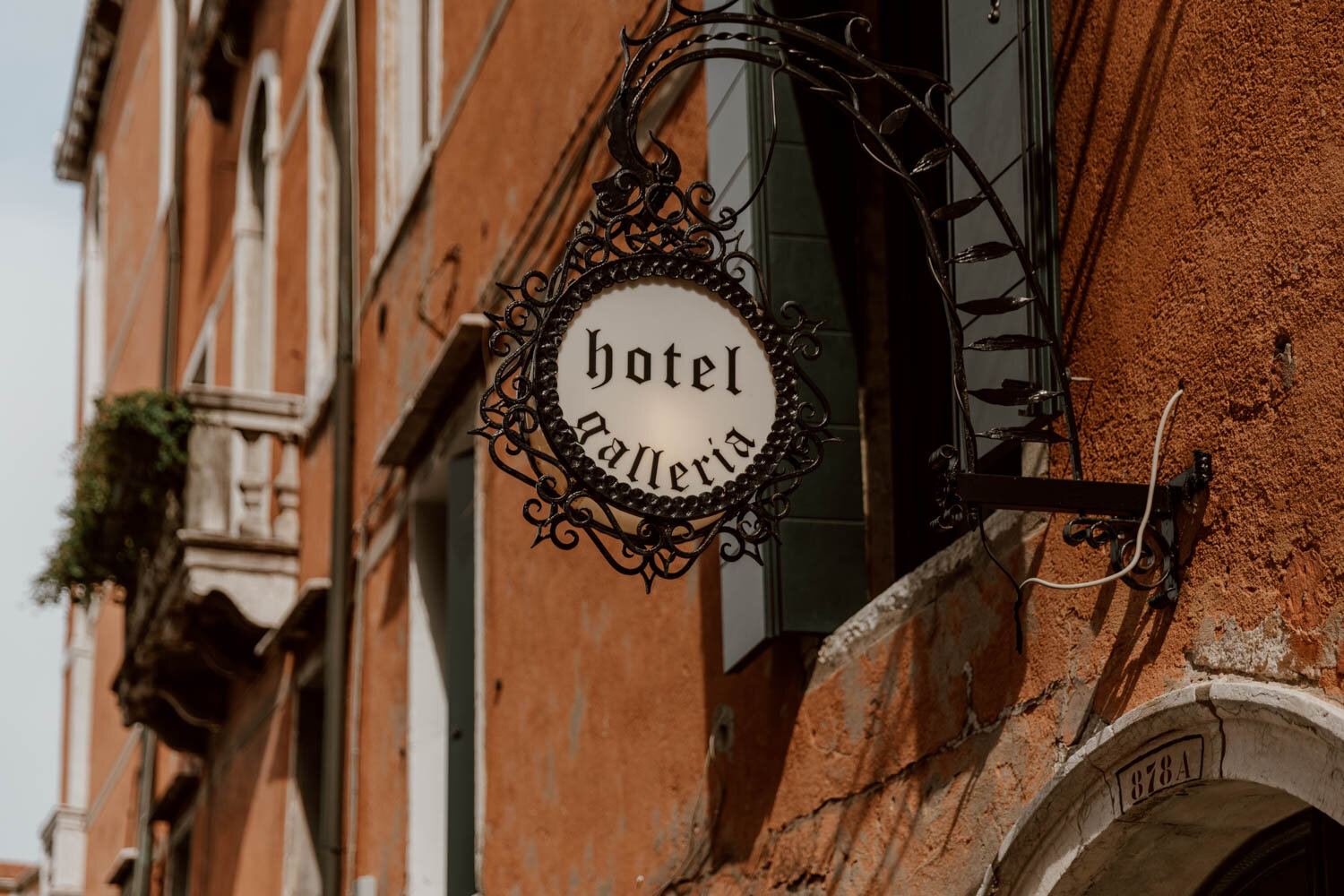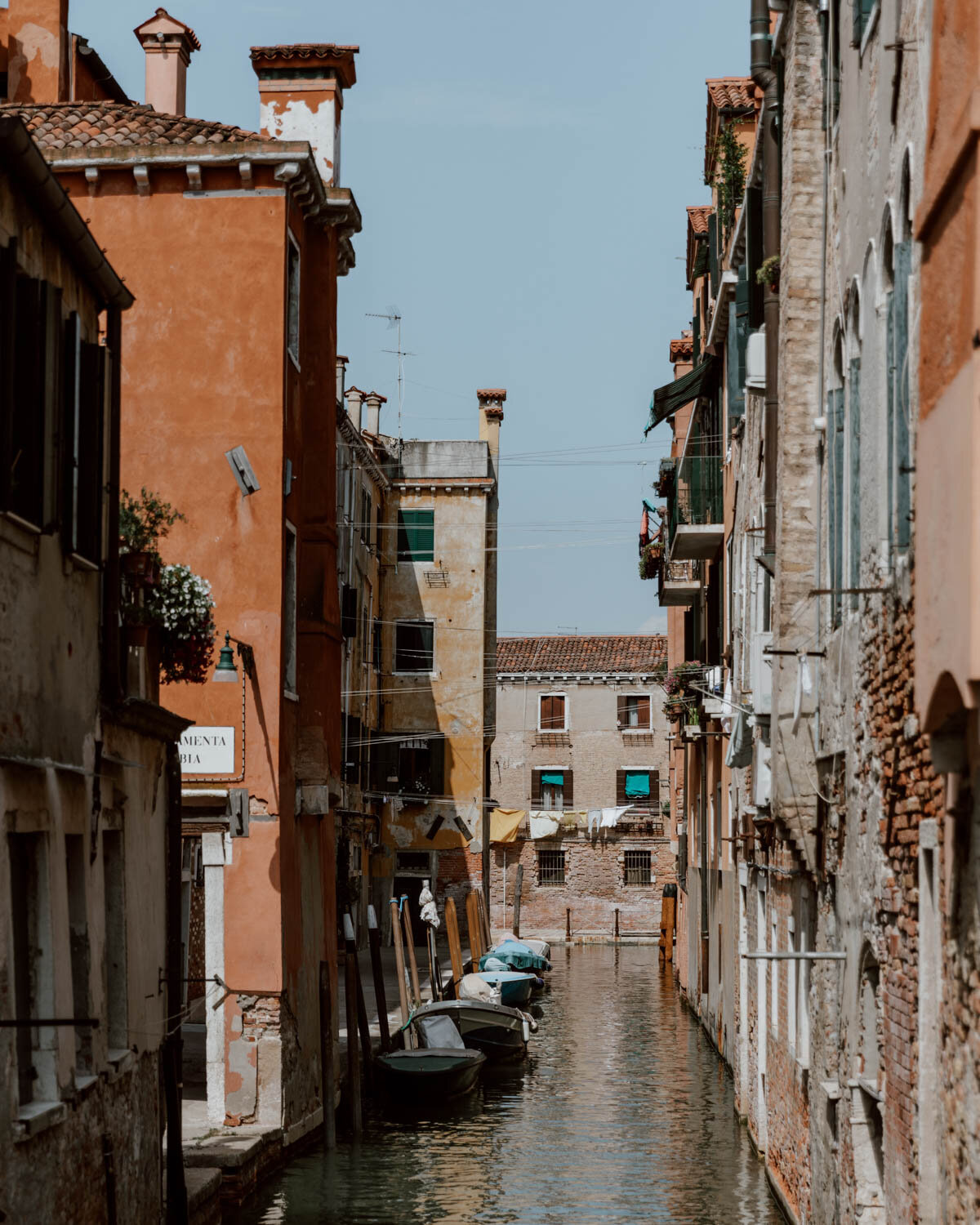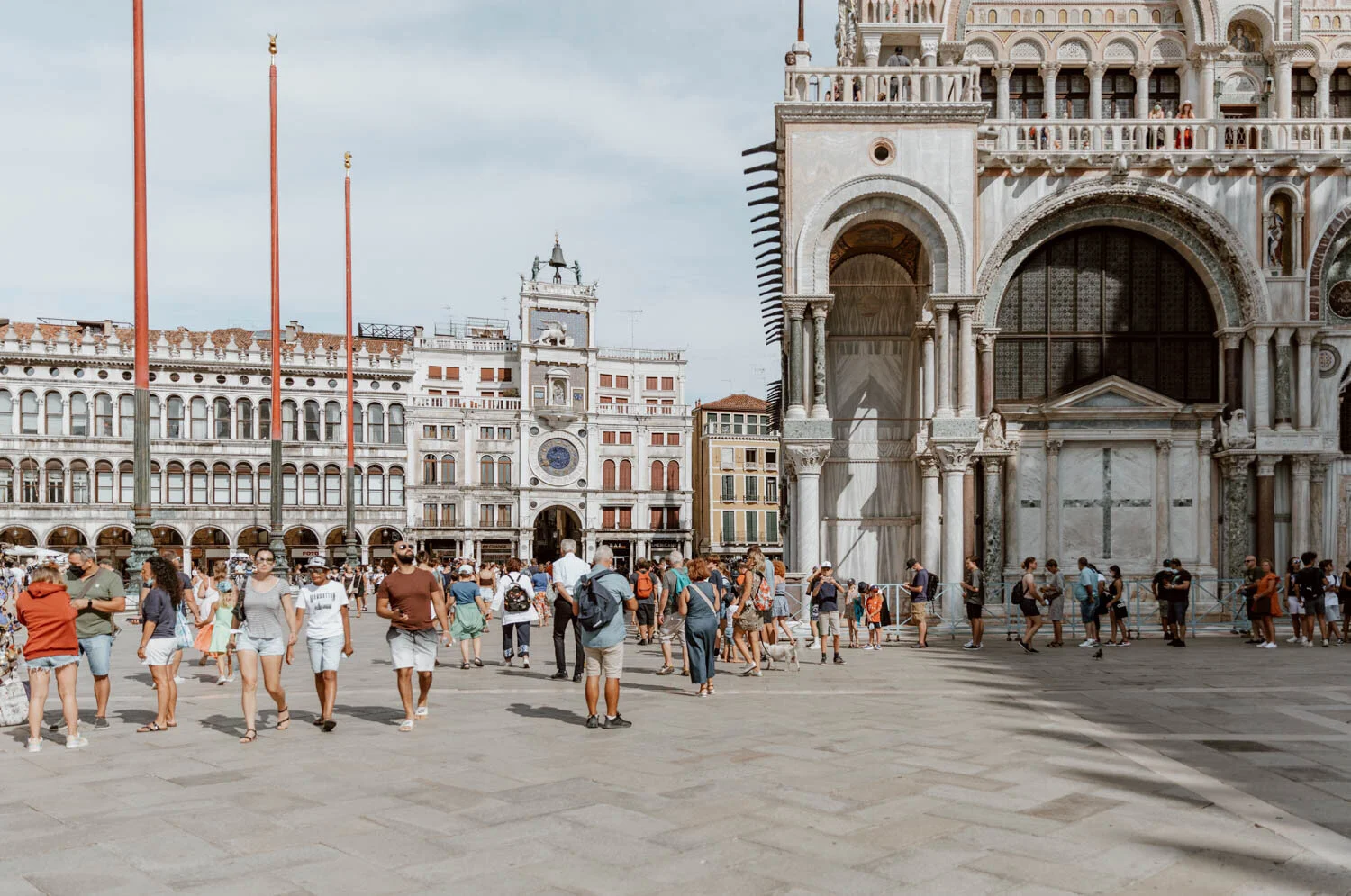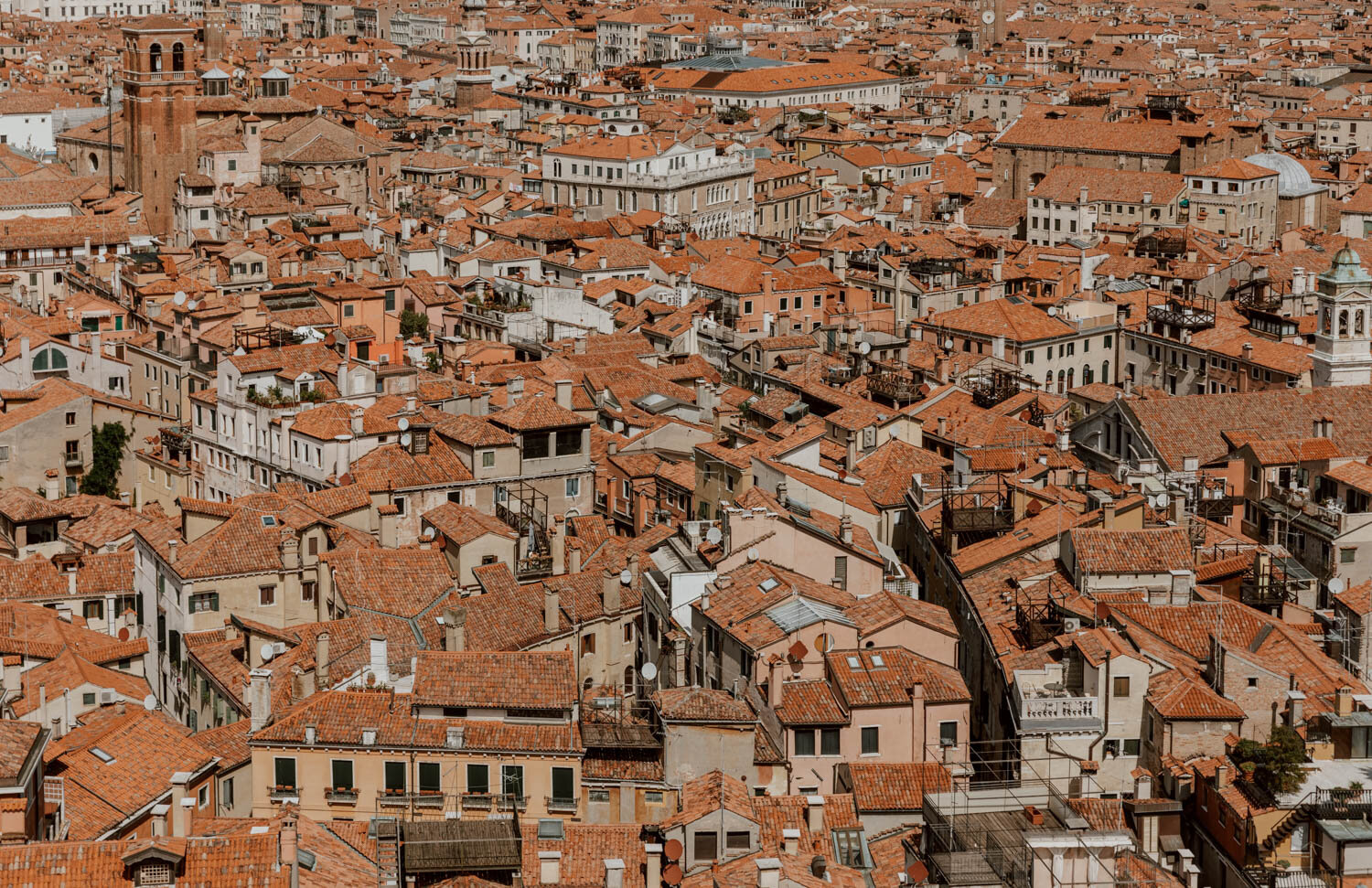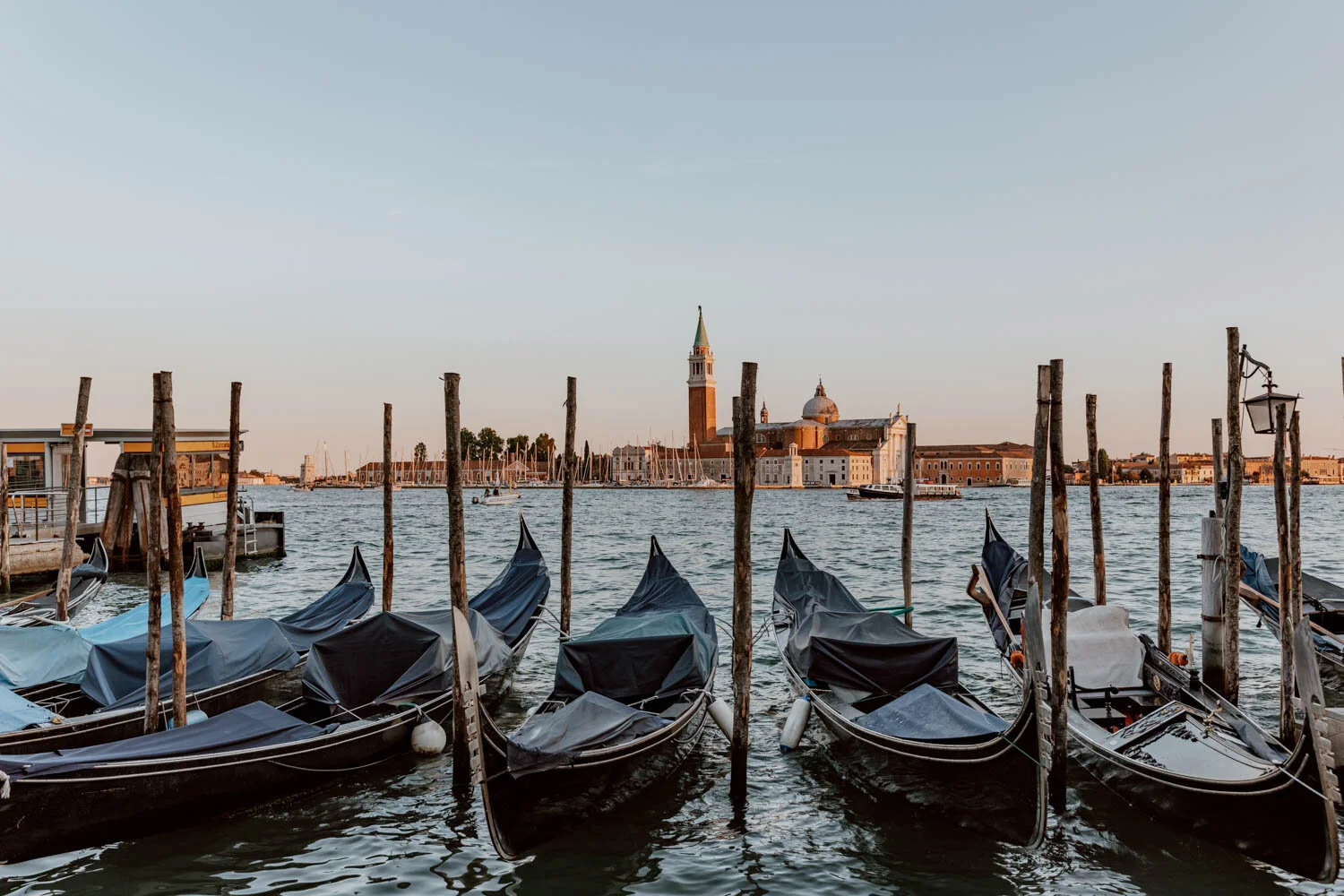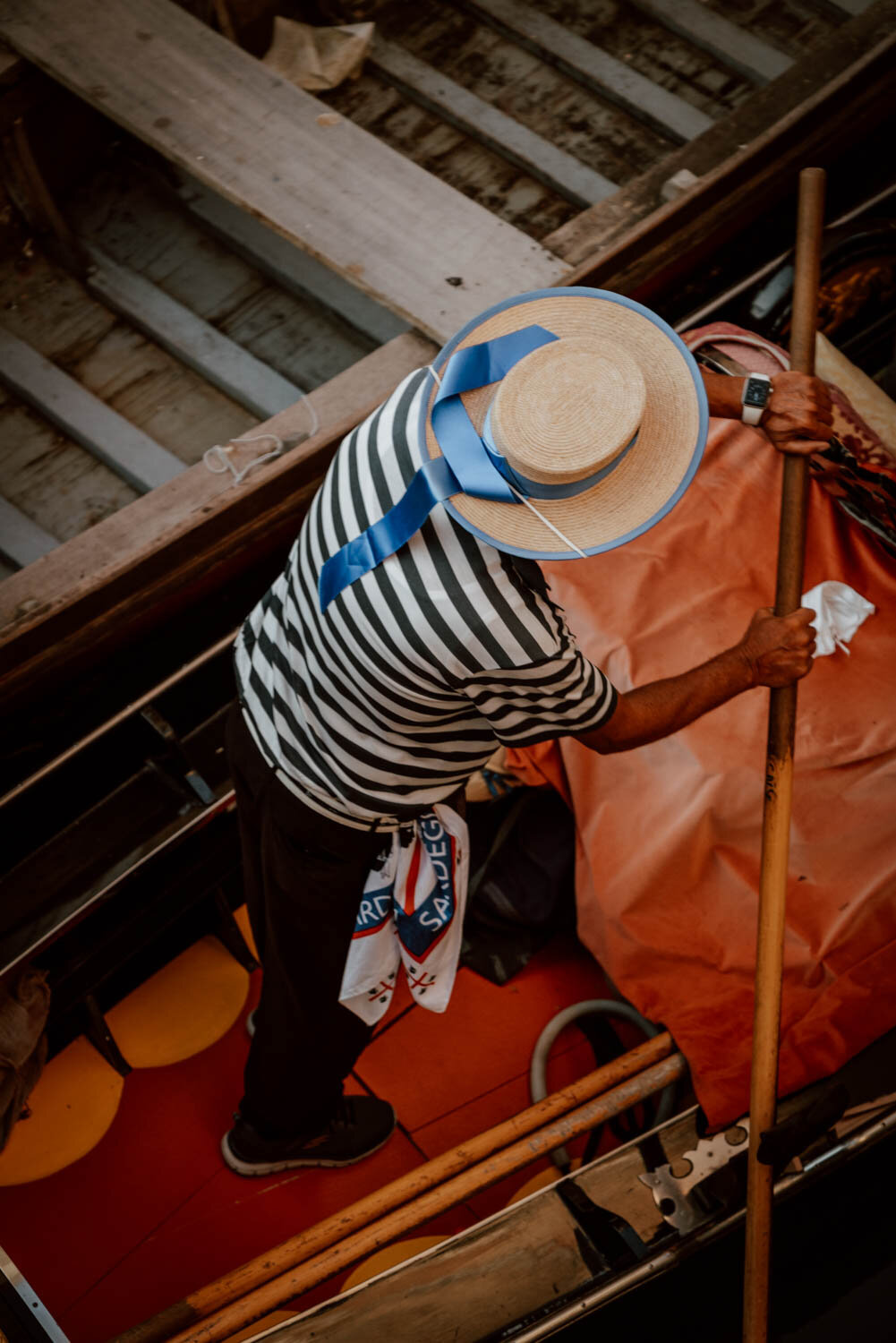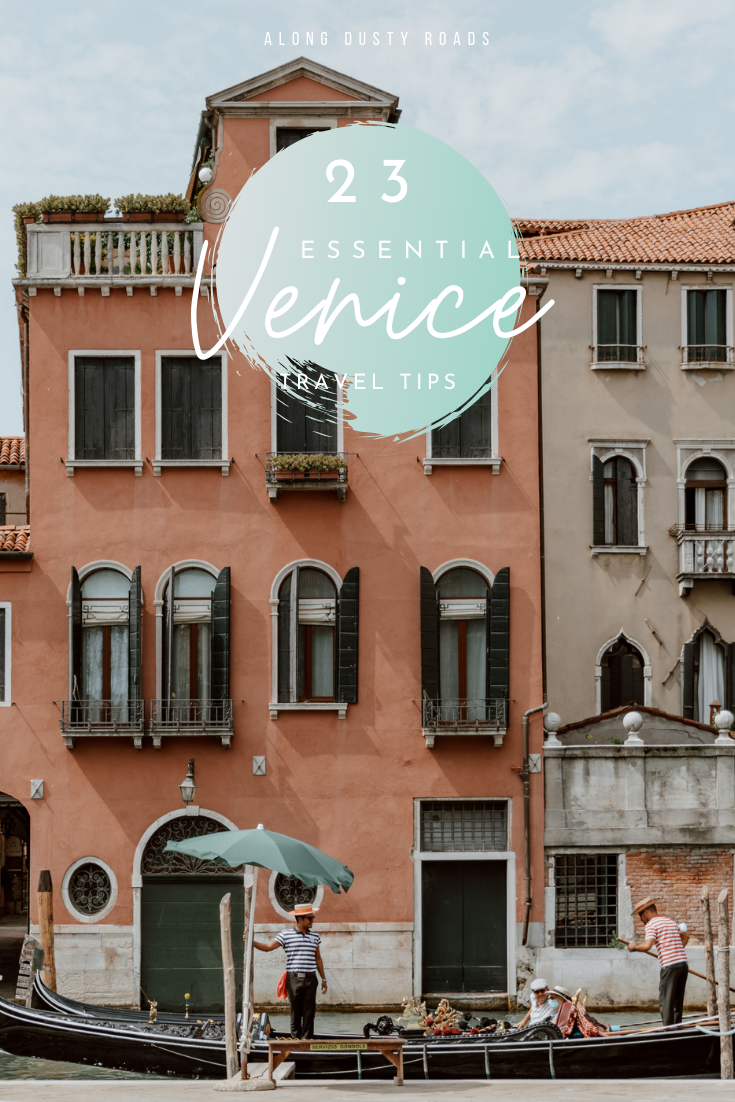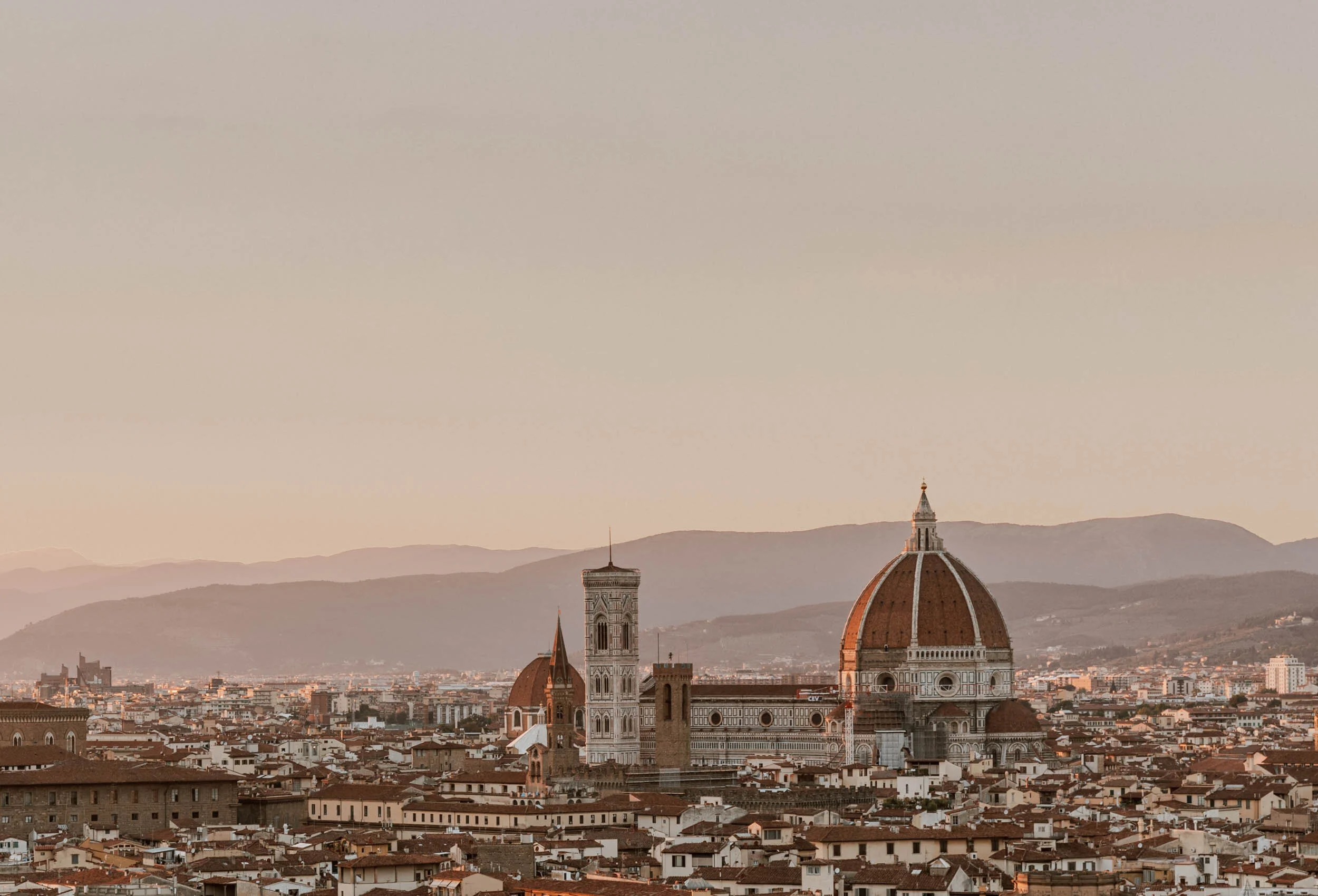If you’re planning a trip to the Floating City, these 23 Venice travel tips are essential reading!
There's something terribly exciting about booking a last minute city break or European escape. No itinerary, preconceived notions or ridiculously long to-do lists, just a sense of escape and a chance to roam unfamiliar streets with no plan in particular.
In this social media led world of travelling for a photo, spontaneous trips to unknown and unresearched destinations are something we should all be doing much more of.
The same however, can absolutely not be said about Venice (called Venezia in Italian).
Visit this labyrinthine floating city without a plan, without any idea of what you'd like to see and your trip will likely be more expensive, involve long lines, the odd bad meal and the sense that you seem to be sharing your holiday with half the world.
So in true Along Dusty Roads style (we do these sorts of posts for pretty much every big destination we visit), we've put together all our Venice travel tips after our six day summer stay into one article. Within it you'll find insider information on accommodation, surprising rules you need to follow (or face a hefty fine), advice on whether or not you should take that gondola ride, the reason you should forget about that canalside picnic, a clear breakdown how to get around, honesty on overtourism, and practical recommendations on how to make the very most of your time in this masterpiece of a city and avoid some common first-timer mistakes.
Here are 23 essential things to know before you visit Venice, Italy.
23 Essential Venice Travel Tips
There’s Water, Water Everywhere
We promise this post is about pointing out the obvious things like, y’know, there’s a lot of water in Venice and that it’s wet.
However, no travel advice article about visiting this floating sinking city can begin without setting the scene of just how unlike anywhere else in the world this city is. There are no cars or Vespas within the historical centre, deliveries are done by wheeled trollies, you cross from one island to another without realising, public waterboats are the main form of transportation, and you’re rarely more than a few footsteps from one of its 150 canals.
Venice is shaped by its waterways, and a trip here is defined by them.
This complex topography is all part of the mesmerising charm of a city defiantly, miraculously built within a lagoon, and is its principal feature - and that’s before you even consider the glorious buildings which have risen and remained standing canalside over the last millennia.
It’s why there really is nowhere else quite like Venice.
You Can Travel From The Airport By Boat
The aquatic nature of the city means you can actually travel from the airport to Venice by boat! As well as being practical, it’s certainly a more memorable way to start your trip than in the back of a shuttle bus.
However, with various entry points, there are actually several ways to reach the historical centre of this island city. The most important thing to do is work out how you're going to get to your accommodation BEFORE you arrive, as a couple of the options are not possible - or practical - should you be getting in late. With the Grand Canal acting as the central highway, it’s inevitable that you’ll still have a short (or deceptively long) walk from the dock to your hotel, and if Google Maps says it’s ten minutes, you can guarantee that it’ll take you at least thirty once you factor in getting lost, bridges, the majority of bridges having stairs, getting lost, and arguments.
Given that the vast majority of visitors will arrive by air into Marco Polo Airport - and that we found the information out there a little confusing - we've put together a separate post with step by step instructions.
Lastly, despite having done a bunch of road trips in Italy, we strongly recommend against trying to include Venice on any northern Italy road trip itinerary (such as The Dolomites). You can’t have the car in the historical centre, parking at Piazzale Roma or nearby will cost a lot, and it simply ain’t worth it.
It's Easy To Get Around Venice by Foot - But There's a Boat Service Too
As our fitbits will attest to, Venice is a very walkable city.
In fact, if you have time on your side, a reasonable level of fitness, and enjoy meandering between destinations rather than simply hopping from point A to B, you needn't rely upon public transport at all save for a couple of popular spots that are only accessible by boat. Naturally, pack some sandals or shoes you don’t mind doing the miles in.
We actually recommend spending your first day here, if time permits, largely on foot; if you only experience it by hopping on and off the boat services to attractions or bridges, you won’t actually get your head around how Venice works and will miss some of its most charming areas off the main drag.
That said however, for those times when travelling across the water is essential or you want to see Venice from the water (also essential), you will need to know the ins and outs of negotiating the excellent but quite pricey vaporetto (that's the public boat service in Venice) or, if you're feeling fancy, the private boat taxi service.
This isn’t a place where you can just order an Uber if you’re running late or lost, so we've put together a separate guide on how to get around Venice with public transport, with all the info on ticket deals, main routes, tips on not going in the wrong direction, and why you need to sort out your luggage as soon as you board!
Tip | Everyone, prince or pauper, should make a point of riding the #1 vaporetto public boat service up or down the Grand Canal. It serves as one of the best value travel experiences in the city, the perfect introduction to its treasures, and only costs €7.50 for the privilege!
Taking a Gondola Ride Isn't Essential
The month preceding our flight to Venice, the days leading up to our departure, even a few hours before actually stepping foot on the gondola - we genuinely didn't know whether it was something we wanted to splurge on.
If it wasn't for an Instagram Stories poll that voted overwhelmingly for us to give it a go (76% to 24%), and the opportunity to provide an informed opinion to you on whether it was worth it, we quite possibly wouldn't have bothered at all.
There is no more quintessentially Venetian experience than a gondola ride on the narrow canals, but at a cost of €80 for a half hour experience, it really is terribly expensive. And whilst it is deservedly at the top of the bucket-list for many visitors to Venice, that price tag may be a little too much to swallow for those on a tighter budget.
A wonderfully romantic experience if you can afford it? Absolutely. But if you feel that that money can be put towards other activities and experiences during your time in Venice, we just want to reassure you that you can have a perfectly wonderful few days in this city crossing the bridges on foot, as you can passing under them on a gondola.
We’ve shared all the essential information on taking your first gondola ride in Venice, including tips on the best parts of the city to do it, where to book and where to avoid, tips on how you can actually do it on a budget too, and clear information on expectations vs. reality. Check out our Complete Guide To A Gondola Ride in Venice.
Don't Rely on Google Maps to Negotiate the Streets of Venice
We were warned about this by our Airbnb host who, likely after one too many guests gone missing, now provides very descriptive directions to his apartment.
Despite this, having grown accustomed to relying on the little blue dot in lieu of any real navigational expertise, we still gave Google Maps a go on more than one occasion. Yeah, it didn't end too well.
With narrow alleys that are just too narrow and architects of old seeming intent on a long-term plot to befuddle you, the GPS simply doesn't know where you are a lot of the time or is as useful in this city as a driver’s licence. This leaves you with a couple of options: either you get real good at reading maps (potentially plotting your route whilst in an open or high up position) or accept that visiting Venice involves a few wrong turns, embrace getting lost and simply go with the flow!
There’s also paper maps but, by all accounts, people still struggle with those within the labyrinthine backstreets and alleys.
Thankfull, there’s a silver lining to all this inevitable confusion; as we mention in our 13 Wonderful Things To Do in Venice post, getting lost within the streets is not only an obligatory rite of passage, but the very best way to get off the beaten track and discover your own little secrets away from others.
And isn’t that what we all travel for?
Don't Cause a Traffic Jam
Not only do these narrow streets cause the little blue dot to go haywire, they also mean that when negotiating Venice on foot, it's very easy for large throngs of dawdling tourists to cause traffic jams for locals.
To avoid this, remember to always walk on the right hand side in streets and on bridges. When stopping to take a photo, ensure that you either don't take too long, that you leave space for people to pass, or aim to take your photos early in the morning when there are fewer tourists about.
It’s a real bugbear for locals getting to work or elsewhere when clusters of tourists clog up the little bridges, so don’t linger too long or get out of the way (when you see how short and narrow some of the bridges are, you’ll totally get this point).
Also, Instagram girls and guys - nobody likes you draping yourself on one side of a bridge to get ‘that’ shot.
Be Careful Where You Sit - and Other Rules You Need to Know
Escalating tourism levels in Venice resulted in the local council instituting a number of rules for visitors to maintain its beauty, reduce litter, and preserve a modicum of peace / sanity for residents; if broken, you run the risk of some pretty hefty fines.
You’ll see signs up about this, but the ones you absolutely need to be aware of before you visit are:
· Do not consume food and drink sitting on the ground, do not sit or lie down on banks and foundations, monuments, bridges, steps, puteals and high-water walkways. Areas where this is strictly enforced include St Mark's Square and Rialto Bridge (where you'll see plenty of people employed specifically to keep everyone in line). Failure to observe this can result in a €200 fine.
· The same goes for the pigeons - give them a bit of your lunch and it’ll cost you lot more than you bargained for! In other words, do not feed the pigeons.
· As tempting as it may be during the summer months, absolutely do not swim in the canals. If caught there's a potential fine of €350, and the chance that you'll get chucked out of the city. Locals do not swim in the canals, so neither should you.
· And no, you can't wander around topless (we're looking at British men here) or in swimwear to cool down either - there's a fine attached to that too.
· No picnics by the canals or on bridges.
· It is also illegal to have a bicycle, unless a resident of Venice or under the age of eight. Even leading one by hand can land you with a €100 fine.
· Disposing of your rubbish in a responsible manner should be a no-brainer, but just in case you need an extra incentive, be aware that littering here has a fine attached.
If you happen to visit the city when it's fairly quiet (like we did), some of the rules can seem a little ridiculous, but as soon as you consider the level of chaos that descends during peak season, when Venice sees visitor numbers of up to 55,000 per day, it's easier to understand why these are essential.
Always Read the Menu in St Mark's Square
It's fairly standard to pay a little more to dine in a city's most iconic square, but most of us would be pretty damn shocked to receive a lunch bill for four people that totals more than €1000.
Sadly, this is not at all uncommon in St Mark's Square, with countless tourists (foreign and Italian alike) being charged exorbitant amounts after failing to properly scrutinise the menu.
To make matters slightly more challenging, it's not just the food and drink prices that you need to keep an eye on, but the coperto charged to sit outside. We've written a whole article on the concept of the coperto in Italy, a thing which understandably flummoxes a good deal of first-time visitors. Essentially it's a cover charge, usually of a couple of euro, but in St Mark’s there’s a trend for exorbitant ones: this chap was charged €43 for two coffees and two waters!
Yes it’s the most famous area of Venice and some of the cafes there do have live music, but you have been given fair warning…
Tip | We’re not huge foodies when we travel, but have become pretty good at working out how to judge a good place and tourist trap restaurant in Italy; given the tourist numbers and dwindling number of locals to cater for in Venice, it’s no surprising that there are not shortage of the latter. As we explain in more detail in our best things to do in Venice post, a great way to sample the city’s authentic cuisine is to dine on cicchetti for lunch or an afternoon snack accompanied by a glass of wine or Prosseco at one of the bacari, the little hole-in-the-wall taverns typical of Venice.
Dress Up Just a Tad
Having backpacked for two years through Latin America in the past, we are no strangers to emptying a rucksack in the desperate search for something slightly smarter, only to be met with holes, stains and backpacker chic. If you're travelling in certain parts of South East Asia or South America, then this is unlikely to cause too much of a problem - Venice however requires a little more effort.
Now, contrary to what Instagram may suggest, you aboslutely do not have to be dressed head to toe in designer goods, a cocktail dress or billowing ballgown at all hours, but we would recommend dressing a little smarter than you would if nipping out to the cornershop for a pint of milk - despite the presence of thousands of foreign tourists, it's important to remember that you are still, after all, in the north of Italy!
Travel Tip | When visiting any religious building in Venice (and throughout Italy), you have to dress appropriately. This usually means covered backs, shoulders, and knees, and taking off your hat inside. A few places have a shawl to borrow or rent, but it helps to know this in advance and plan accordingly (entry can be refused otherwise). Emily always keeps a scarf in our daypack which does the job nicely.
The City Feels Very Safe
As is common across tourist heavy destinations, Venice has more than its fair share of pickpockets. With that said however, during our six days there we felt overwhelmingly safe - even when walking back through dark empty streets late at night.
Of course, sensible safety precautions should be taken (be careful with your valuables, don't flash too much cash, single females may want limit long walks in the dark), and you do need to be hyperaware of your pockets and surroundings when taking the vaporetto) but this is absolutely not a city where you need to be overly concerned about staying safe.
Understand Toilets in Venice
Trust us here, you’re going to want to know about this before you’re caught short.
Public toilets are few and far between in Venice, have limited opening hours, and cost €1.50 to enter (it’s good to keep some small change handy for this). The bagni comuniali (city toilets) are often tucked away down a side street and not signposted in advance either, so your bladder is unlikely to thank you for insisting on awaiting them.
If you need to spend a penny in Venice, then the most expedient solution is to go to a cafe or bar, order an espresso to have at the counter (the cheapest option) or a soft drink, use their bathroom, finish your drink, and leave with a spring in your step. This is acceptable behaviour, providing you don’t just rush in, shout ‘cappuccino’, and leg it to the bathroom.
Also, although this will increase the necessity of you to exploit the above technique, please carry a reusable water bottle to fill to fill up at your hotel / Airbnb before heading out and from the fountains scattered around Venice. Reducing single-use plastic waste and consumption when travelling is incredibly important, as well as helping you to save a bit of money on your trip!
Read this article for more advice on how to use less plastic when you travel.
The Overtourism Issue
This deserves so much more than a singular point in this article; in fact, we have an inkling that it will get its very own blog post on our site in due course. Yet suffice to say, Venice is suffering from not simply mass tourism, but mass overtourism.
As we mentioned above, during the peak summer months, Venice sees more than 55,000 tourists per day, with projections at 26 million visitors annually. It's kind of unfathomable, and understandably concerning - and it's the reason we had sworn off ever visiting. It’s not that we didn’t want to visit, but we just didn’t think we’d enjoy that level of overcrowding and didn’t want to add to the numbers.
Summer 2020 changed that, for obvious reasons.
The underlying problem is that people are never going to stop wanting to visit these islands; it is never going to become less beautiful, less intriguing or less unique. Venice will always be, well, Venice.
But it will always have its unbearably large crowds too.
So, what can we as tourists and travellers do? First things first, avoid visiting on a cruise. Not only do they cause untold damage to the lagoon upon which Venice sits and depends (the canals have been made deeper to sustain the use of larger and large cruise ships), their passengers are responsible for up to two thirds of the daily visitors to the city; visitors that spend very little money (if any at all) within the local economy, yet use up significant resources and create vast amounts of rubbish. These gargantuan ships are hated by locals, and there’s an ongoing campaign to rightly stop them.
Secondly, try and visit in the shoulder season. The north of Italy generally has lovely (even hot) weather as early as May, and it lasts through to the end of September. Outside of the peak summer season prices are also cheaper, lines shorter and everything a little less overwhelming. Winter trips would also see fewer people, but does run the risk of the acqua alta flooding making things difficult (see more below).
And thirdly, try and be as responsible and considerate a visitor as possible. We've discussed the rules and regulations put in place by the local council earlier; it's on us all to respect them. Despite often feeling like a living museum, Venice is still home to 54,000 residents and the way we all act in their city will likely decide how many remain in the years to come. Save money on what you can, but also put money into local businesses, don’t be ‘that’ dickhead tourist, and be conscious of the simmering tensions.
Info | A daily tax for day trippers was due to be brought in in July 2020, however due to the global health crisis and the effect on local tourism numbers, this has been postponed until July 2021 .
Get Out and About Early
Venice is one of the most extraodinarily beautiful cities we've had the opportunity to visit, but some of this beauty will evaporate (and literally be obscured) under the footfall of fifty thousand tourists. And whilst photographers will naturally gravitate towards early morning rises, Venice's popularity means that this is a destination where we'd whole heartedly recommend every single person abandoning their leisurely lie-ins at least a couple of mornings.
Trust us, it's worth it.
Read More | Where To Find The Best Views of Venice
Visiting in the Winter and the Risks of Venice Flooding
The city was built atop a group of islands in a lagoon, into which empty two rivers connected to the Adriatic Sea. This means that when the tide rises, as it naturally does twice a day, seawater empties into the lagoon, causing a rise in water levels throughout Venice. Normally this is something you'll barely notice, but in the winter (especially in the month of November), strong winds and bad weather can contribute to high tides of 80 centimetres of more - also known as acqua alta.
A common phenomena here, all stores have flood protection barricades on their doorsteps, and you can't call yourself a proper Venetian unless you own a pair of waders.
The issues comes when the tide goes beyond 1.4 metres. It is above this that significant flooding - especially in St Mark's Square which is one of Venice's lowest points - begins to occur, and when you will hear sirens sound out around the city to warn locals to prepare.
As a result of climate change and cruise ships, over the last couple of years the incidences of tides beyond 1.4m have become more and more frequent, resulting in significant and sometimes irreparable damage to Venice's most important heritage sites. The worst flood reached 194 cm in 1966, covering 90% of the city, but 2018 came worryingly close at 156 cm. The eagle-eyed amongst you will be able to see the flood lines etched on doorways, including at Magna Bevi Tasi (in a nice little square off St Mark’s where we had breakfast and afternoon spritz a few times).
This is the reason why the famous bookshop of the same name, stores its books in bathtubs and boats!
So, what does this mean for your off-season break to Venice? Mostly, you need to come prepared. Raised platforms are erected around Venice during the months of acqua alta, but it's advisable to bring suitable waterproof items of clothing and accept that some popular sites may not be accessible if you happen to be in the city during significant flooding. Venice continues to operate in the face of these floods, but it will make your experience very different to summer.
Picking Between An Airbnb and a Hotel
Given Venice's issues with overtourism, this is something we struggled with greatly prior to booking our accommodation. We adore Airbnb and it’s fantastically aligned to our travel style, but we are aware of the negative impact that it and other apartment rental companies have had on local rents and the local population's numbers (permanent resident numbers here are less than a third of what they were in the 1950s, but the cost of rent isn’t the sole reason).
This is why we intentionally sought out a hotel for our visit (something we very rarely do).
Alas, with only 2,400 hotels in the entire city, availability is low and prices relatively high for varying quality. After several evenings reading countless reviews and discussing our options, we simply could not justify the significant cost of a basic hotel when we could get a stylish little apartment with everything we need, including a kitchen, for less than half the price in an excellent location
Venice is not a particularly cheap destination to visit, especially when compared to other Italian cities (see What Things Cost in Venice), and so we genuinely couldn't bring ourselves to spend nearly twice as much on a pretty average guest house as we did on a fairly great Airbnb - and therein lies the Gordian knot of how cities and hotels need to respond better to the market.
We know we'll not be the only ones that face this conundrum, especially given the abundance of low-cost flights into and out of the city.
Tip | One thing that is bloody cheap in Venice are Aperol Spritz cocktails - indulge in the best we’ve tasted in all of Italy for as little as €3.50.
Book your Accommodation Early
Whichever you opt for however, one thing we'd highly recommend is booking your accommodation in Venice early, especially if you're visiting during the most popular months of June to August, when visitor numbers swell and the best hotels and apartments get snapped up months in advance.
This is especially important if you want to stay in a particular hotel, need certain amenities or would prefer to stay in a particular area. For example, although Venice is a very walkable city, the location of your accommodation is important - especially if you have a large suitcase and aren't fully prepared to carry it up and down stairs, over several bridges and along narrow alleys without any assistance to and from the Grand Canal.
To help you get started, in this post you can find our personal selection of where to stay in Venice (published soon).
Top tip | Venice charges a daily tourist tax that is to be paid in addition to any nightly rate (whether that be hotel, guest house or Airbnb). This should be considered extra to the overall cost quoted by the hotel/apartment and is to be paid separately to your accommodation bill. You should be able to pay in card or cash upon arrival, depending on the individual accommodation. The cost per person, per night is €2-5 dependent upon the star rating of the hotel and is set by the local government. In an Airbnb the standard fee is €2 per person, per night.
Don't Be Fooled By Mestre
When we first began looking at where to stay in Venice, we noticed that a number of the cheaper options (especially hostels) were located in Mestre. Whilst this area is technically in Venice, it’s on the mainland and not the ‘Venice’ that you’ll be expecting. Although your room will cost a fair bit less, you'll need to take a vaporetto in each day (which will get pricey) or a bus or train, and then walk (which will be needlessly time consuming).
Of course for those on a super tight budget, this may still be the best option, but we would generally recommend most travellers opt instead for somewhere a little more central.
As a side note, following our chat with a lady at the 'No Grandi Navi' office, in the last couple of years Venice residents in the borough of Mestre - many of which have moved here from the centre to escape rising rents and tourists - have began to find themselves pushed out of even here as cheap guest houses, apartments and large backpacker hostels have bought up property.
Tip | No Grandi Navi is the main grassroots group campaigning against cruise ships in Venice, as well as other issues. We were aware of the negative impact of cruise ships prior to visiting, but time spent chatting here really underlined how grave this issue has become from an environmental, sustainability, and a liveability perspective. They encourage tourists to drop by their small visitor centre to learn more about the issues and support their organisation, and they speak English too. It’s located at Calle Seconda de la Fava 5847, or you can find it here on Google Maps (by the way, stop by at Zanzibar for a drink too as we really liked that place and the couple running it were lovely).
Skip the Queue Tickets Are Your Friend
Despite being British, we don’t really want to travel somewhere just for the queues.
However, the only places where we have been able to justify purchasing ‘skip the queue’ tickets are those which are 1) incredibly popular 2) worthwhile visiting and 3) already cost quite a bit to enter.
Several attractions in Venice certainly fit these criteria.
Queues around the block in St Mark’s Square for the Basilica and the Campanile are as much a part of the Venetian cityscape as gondolas in the canal, whilst the Doge’s Palace and Peggy Guggenheim Collection see thousands of visitors per day. Unless you want to spend a lot of your trip waiting for hours in line (seriously) for each, then purchasing a ‘skip the line’ ticket is worth the additional money.
We were fortunate during our visit in August 2020 that queues were shorter than usual, and current events meant that most tickets had to be bought in advance for a specific time slot. However, once normality returns and they are reinstated, we would honestly consider them essential for the most popular attractions, lest you have waste two hours to get up St Mark's Campanile or into the Doge’s Palace!
Venice has a City Pass
Prior to 2020, Venice had a rather good city card which covered transport to / from the airport and within the city, as well as entrance to a number of its top tourist sites. It could be purchased 24, 48 and 72 hour periods.
Unfortunately, given the current climate and the need to book tickets for all attractions in advance, we're not sure whether the card is even still valid. You can check for more information here, and we will be updating this article regularly as the situation in Italy evolves.
You Will Not Be Able to Do Everything
There are estimated to be around 100 museums in Venice. Throw in all the viewpoints, hidden canals, history, boat rides, boutiques, curios, culture, and general meandering involved in a visit to Venice, and you'll quickly realise that is downright impossible to cover everything the city has to offer in a few short days.
It would likely be impossible to cover it all in a few weeks.
This is why day trips to Venice are a bad idea generally, and have a disproportionately negative impact on those overtourism issues.
However, for anyone visiting for a long weekend or a week, it means you need to plan your itinerary carefully (and in advance), to ensure you establish your must-dos but still allow time for serendipitous discoveries, street side coffees and late afternoon aperitivos whilst watching the world go by.
After all, everyone should have a reason to return to Venice one day...
To help you out, we’ve shared our personal recommendations for a first trip in '13 Wonderful Things To Do in Venice’.
A Visit to Venice Doesn’t Come Cheap
Despite no longer being super budget backpackers, we can't quite let go of the mentality that becomes somewhat engrained. If you're similarly inclined, you may find that Venice can work out a little pricey.
Indeed, it can be very very expensive if you do everything, and very expensive even if you don't do everything.
If you’re planning this trip as a romantic break, then, this won’t be a problem - but just be aware that your money won’t go quite as far as some other beautiful, romantic places in Italy (except when it comes to Spritz and cichetti).
Tip | Whatever your travel budget, everyone needs to know they should avoid Euronet ATMs at all costs! They are seemingly everywhere in Venice but charge you a ridiculous conversion rate, and make a decent dent in your spending money on a longer holiday. We see so many people using them when we travel in Europe, and dread to think how much money they’re losing unnecessarily. For more advice on how we avoid ATM and bank fees when we travel, read this post.
Read Later | What Things Cost in Venice
Consider A Day Trip To Burano
We know, we know. Why on earth would you consider leaving Venice when it’s the place you’re dreaming about right now?
However, if you’e here for 3+ days, then we would highly recommend getting up and out early one morning to catch the public ferry over to another of the islands within the lagoon - Burano!
Home to a close-knit fishing community, a canal of its own, and the most picture-perfect colourful houses you ever will see, as well as being renowned for its historic lace production, it offers a distinctly Mediterranean vibe in contrast to Venice. We loved our morning and afternoon there, and have zero regrets about taking a day away from Venice in order to have it (although it did mean we had to sacrifice a couple of galleries we had on our list).
To find our more, and plan your own visit, check out our A Day Trip to Burano post.
Tip | The other option for a day trip from Venice is the island of Murano. Famed for its glass factories, you will find yourself offered a ‘free’ boat ride there by men on Riva degli Schiavoni, but this often turns out to only be free if you buy something from the expensive shop they’re linked to on the island. Take the risk if you like, but you can also go there on your own with a private transfer, a tour, or the number 41 or 42 vaporetto.
If you would like to visit both in one day, then you can take this tour.
Venice Will Leave You Speechless
Despite never intending to visit Venice, but having now been fortunate to spend five days roaming her streets, hearing her secrets and capturing her beauty, we get it.
We get why millions of people from all over the world flock to her shores, to this floating sinking treasure chest of a city.
And whilst ever increasing visitor numbers may mean that her true, unadulterated beauty may sometimes only be appreciated on those early morning walks that we implore you all to take, Venice will always be a place so perfectly enchanting that you can't help but feel blessed to gaze upon it in person.
Your Next Stop
Hopefully you’ve found these Venice travel tips to be super helpful in planning your visit? Be sure to check out the rest of our Venice travel guides!
13 Wonderful Things to Do in Venice
A Complete Guide to Taking a Gondola Ride in Venice
How to Get From Marco Polo Airport to Venice
Where to Find the Best Views of Venice
How to Plan Your Venice Travel Budget
Burano | The Perfect Day Trip From Venice
Where to Stay in Venice (published soon)
23 Things to Know Before You Visit Italy (published soon)




